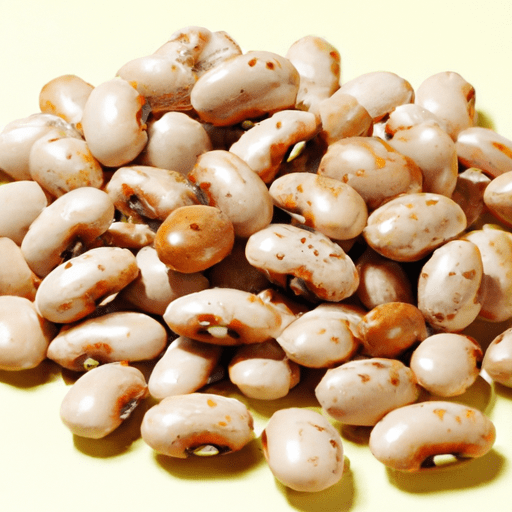Exploring the Nutritious and Versatile Navy Bean
Navy beans, also known as haricot beans or pea beans, are small, oval-shaped legumes bursting with flavor and versatility. These beloved beans have been a staple in kitchens around the world for centuries, offering a range of culinary possibilities. In this blog post, we will dive into the fascinating world of navy beans and explore their taste, common uses in cooking, nutritional value, and share interesting historical tidbits that surround these delightful legumes.
Taste and Texture
Navy beans have a mild and creamy taste, making them perfect for absorbing the flavors of various ingredients. Their soft, tender texture adds a delightful contrast to a wide array of dishes. When cooked, navy beans become soft with a delicate inner creaminess that pairs beautifully with both savory and sweet flavors.
Common Uses in Cooking
Thanks to their fantastic taste and versatility, navy beans can be found in dishes from soups and stews to salads and casseroles. Here are a few popular ways to incorporate navy beans into your culinary adventures:
1. Soups and Stews
Navy beans are a superb addition to hearty soups and stews, bringing both texture and substance to the dish. They have the wonderful ability to thicken soups while infusing them with a creamy richness. Whether you’re making a classic minestrone or a comforting bean soup, navy beans will make your bowl of warmth extra satisfying.
2. Salads and Dips
Navy beans can elevate your salads and dips to new levels of deliciousness. Toss them with vibrant vegetables, herbs, and a tangy dressing for a refreshing and protein-packed salad. Puree them with fresh herbs, garlic, and olive oil for a delectable bean dip that will excite your taste buds.
3. Sides and Main Dishes
Navy beans make a delightful side dish when seasoned with herbs, spices, and a touch of garlic. They also work beautifully as a main ingredient in veggie burgers, bean patties, and even in vegetarian chili. The possibilities are truly endless!
Nutritional Value
Navy beans are not only flavorsome but also highly nutritious. Packed with essential vitamins, minerals, and fiber, they offer numerous health benefits. Here’s a glimpse into the nutritional value of navy beans:
- Protein: Navy beans are an excellent plant-based protein source, making them an ideal choice for vegetarians and vegans.
- Fiber: These legumes are rich in dietary fiber, aiding digestion and promoting a healthy gut.
- Iron: Navy beans contain iron, which is essential for red blood cell production and overall energy levels.
- Vitamins and Minerals: They are a good source of folate, magnesium, potassium, and antioxidants, supporting overall well-being.
Historical Significance
As their name suggests, navy beans gained popularity in the early 20th century due to their immense popularity as a staple food in the United States Navy. They were a crucial part of the sailors’ diet and earned the iconic name “navy beans” as a result. Interestingly, these beans have long been cultivated throughout the Americas and were already enjoyed by Native American tribes before their journey to naval kitchens.
Conclusion
The humble navy bean is a powerhouse of taste, versatility, and nutrition. From delightful soups and salads to satisfying sides and mains, these legumes have earned their spot in kitchens worldwide. Don’t miss the chance to experiment with this delightful ingredient and enjoy the wide array of dishes it can create. So go ahead, stock up on navy beans, and let your culinary creativity soar!
*Remember to soak and cook your dried navy beans thoroughly to ensure their tenderness and eliminate any toxins.
Navy Bean
Origin: The navy bean, also known as the haricot bean or Boston bean, is a small, white, oval-shaped bean primarily cultivated in North America. It is believed to have originated in South America and was introduced to Europe in the 16th century by Spanish explorers. The name “navy bean” was given to it because it was a staple food for the United States Navy in the mid-1800s.
Common Uses: Navy beans are commonly used in a wide range of dishes, including soups, stews, salads, casseroles, and baked beans. Due to their mild flavor and creamy texture, they are often used as a base ingredient or filling in vegetarian and vegan dishes, such as bean burgers or dips.
Nutritional Benefits: Navy beans are an excellent source of plant-based protein, fiber, and several essential minerals, making them a nutritious addition to a balanced diet. A half-cup serving of cooked navy beans provides around 110 calories, 8 grams of fiber, and 8 grams of protein, while also being low in fat and sodium. They are a good source of potassium, magnesium, iron, and folate.
Unique Properties and Historical Significance: Navy beans are known for their unique ability to absorb flavors from other ingredients during cooking. Their creamy texture and relatively quick cooking time (compared to other dried beans) have made them a popular choice in many cuisines around the world. In the United States, navy beans gained historical significance during times of hardship, such as the Great Depression, when they were widely consumed due to their affordability and versatility. They were also known for being a main ingredient in the famous Boston Baked Beans dish, which is a traditional preparation method that originated in colonial New England.




Use the share button below if you liked it.
It makes me smile, when I see it.